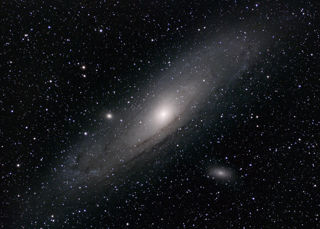
Sokol KV-2 Rescue Spacesuit
Sokol KV-2 Rescue Spacesuit
This spacesuit is designed to keep cosmonauts alive if their Soyuz spacecraft suffers a de-pressurisation event. The spacesuit is connected directly to the spacecraft and provides two hours of life support in an emergency. They are not designed for spacewalks outside the spacecraft.Early Soyuz flights did not require cosmonauts to wear pressure suits. However, after the Soyuz 11 tragedy, when the crew died during re-entry after their spacecraft de-pressurised, the importance of rescue spacesuits was re-thought. The Soviet space programme sought to design a suit that could be worn for launch, landing and docking manoeuvres – the times of most risk. NPP Zvezda was selected to come up with a solution, and rather than adapt pre-existing spacesuit designs, they chose to modify their own high-altitude aviation pressure suits. The Sokol (meaning ‘Falcon’) suit was born, and through its various design modifications it has become the most successful spacesuit of this type.
The National Space Centre’s Sokol suit #155, manufactured by Zvezda in 1990, is similar in size and design to the suit flown by Helen Sharman on Project Juno in 1991 - as she became the first Brit in space. The suit is an authentic, but un-flown, Sokol spacesuit worn by Helen during her training. The suit has been mocked-up for display purposes to look like the one Helen wore in space, by stitching patches of the joint British-Soviet flight to it. The appliqued patches include a Zvezda patch, the Project Juno (Soyuz TM-12) mission patch and a Union Jack. There is also a bi-lingual name label.
The Sokol KV-2 design - where K stands for the Russian word for space and V for the Russian word for ventilation - consists of a pressure garment with hood, radio headset and canvas boots. The pressure suit is made of white nylon canvas, with a rubberised cloth lining (polycaprolactam). It has an attached pressurised hood (rather than a solid metal helmet) with a hinged polycarbonate visor that secures to a blue anodised aluminium clavicle flange. Decorated with royal blue trim and appliqued patches, it has detachable gloves, attached umbilical cords, and attached soled feet. The hoses and cables for electrical, air and coolant lines join the suit at anodised aluminium umbilical interfaces. There is a pressure equalisation valve on the centre of the chest. A support sling wraps from the chest to the back with webbed belts and metal clips. The sleeves have adjustable articulating cables in the upper arm and webbed belt lashings and a pressure gauge on the left-hand sleeve. There are adjustable webbed straps attached to metal rings on the side seams and along the crotch. The suit has a double V-front zip through which the suit is entered and a lace-up crotch covered by a triangular placket. It has pleated knees and has two utility pockets on each leg. The grey canvas boots cover the pressure suit feet. A radio headset is worn under the hood and is made of leather, with a cotton mesh section covering the skull.
All images:
-
![Sokol KV-2 Rescue Spacesuit, worn by Helen Sharman during training. Displayed in the Kazbek-UM Shock Absorbing Couch Helen sat in for her mission]()
Sokol KV-2 Rescue Spacesuit, worn by Helen Sharman during training. Displayed in the Kazbek-UM Shock Absorbing Couch Helen sat in for her mission -
![Sokol KV-2 Rescue Spacesuit, worn by Helen Sharman during training]()
Sokol KV-2 Rescue Spacesuit, worn by Helen Sharman during training -
![Sokol KV-2 Rescue Spacesuit with Kazbek Couch]()
Sokol KV-2 Rescue Spacesuit with Kazbek Couch -
![Sokol KV-2 Rescue Spacesuit with Helen Sharman before installation at the National Space Centre]()
Sokol KV-2 Rescue Spacesuit with Helen Sharman before installation at the National Space Centre -
![Astronaut Peggy Whitson sitting in a Kazbek Couch during testing, showing what the Sokol KV-2 Rescue Spacesuit looks like when pressurised - Credit: NASA/Victor Zelentsov]()
Astronaut Peggy Whitson sitting in a Kazbek Couch during testing, showing what the Sokol KV-2 Rescue Spacesuit looks like when pressurised - Credit: NASA/Victor Zelentsov
Video
Web resources
More information
Object number
1999-2
Location
Into Space Gallery
Has this object been into space?
No
Dimension - Dimension, Value, Measurement unit
Height: 170.0cm
Depth: 50.0cm
Width: 75.0cm
Weight: 10.5kg
Material
Nylon
Polycaprolactum
Plastic
Polycarbonate
Metal
Aluminium (Alloy)
Associated Person
Helen Sharman
Object Production Date
Circa 1990
Object Production Organisation
NPP Zvezda
Object Production Place
Russia
On Display Status
On display
Copyright and Photos
Photography is shared via the license below.
However, some objects on this website are on loan to the National Space Centre and are being shared through the permission of their owners.
Commercial use of images from this website is not allowed without additional permissions being granted. To request permission to use images for purposes not covered in the license below, please contact [email protected]
Individual objects on loan to the National Space Centre may have additional copyright permissions, so advice should always be sought before use.
![]()
This work is licensed under a Creative Commons Attribution-NonCommercial 4.0 International License.






